- Page 1 and 2: Edition No. 147 / Édition n 0 147
- Page 3 and 4: Published quarterly by ICAO under t
- Page 5 and 6: Publicado trimestralmente por la OA
- Page 7 and 8: Edition No. 147 / Edition n 0 147 /
- Page 9 and 10: AIRCRAFT OPERATING AGENCY, AUTHORIT
- Page 11: MRCRAFT OPERATING AGENCY, AUTHORITY
- Page 14 and 15: СОДЕРЖАНИЕ Предисл
- Page 19 and 20: AVANT-PROPOS Le présent document c
- Page 21: 3. indicatifs téléphoniques 3.1 L
- Page 24 and 25: S 0-6 2. Designadores de tres letra
- Page 27 and 28: ПРЕДИСЛОВИЕ Данный
- Page 29: RO-7 ii) в серии У и в г
- Page 32 and 33: 0-10 Democratic People's Republic o
- Page 34 and 35: 0-12 Thailand The former Yugoslav R
- Page 36 and 37: 1-2 Aircraft Operating Agency, Auth
- Page 38 and 39: 1-4 Aircraft Operating Agency, Auth
- Page 40 and 41: 1-6 Aircraft Operating Agency, Auth
- Page 42 and 43: 1-8 Aircraft Operating Agency, Auth
- Page 44 and 45: 1-10 Aircraft Operating Agency, Aut
- Page 46 and 47: 1-12 Aircraft Operating Agency, Aut
- Page 48 and 49: 1-14 Aircraft Operating Agency, Aut
- Page 50 and 51: 1-16 Aircraft Operating Agency, Aut
- Page 52 and 53: 1-18 Aircraft Operating Agency, Aut
- Page 54 and 55: 1-20 Aircraft Operating Agency, Aut
- Page 56 and 57: 1-22 Aircraft Operating Agency, Aut
- Page 58 and 59: 1-24 Aircraft Operating Agency, Aut
- Page 60 and 61: 1-26 Aircraft Operating Agency, Aut
- Page 62 and 63: 1-28 Aircraft Operating Agency, Aut
- Page 64 and 65: 1-30 Aircraft Operating Agency, Aut
- Page 66 and 67:
1-32 Aircraft Operating Agency, Aut
- Page 68 and 69:
1-34 Aircraft Operating Agency, Aut
- Page 70 and 71:
1-36 Aircraft Operating Agency, Aut
- Page 72 and 73:
1-38 Aircraft Operating Agency, Aut
- Page 74 and 75:
1-40 Aircraft Operating Agency, Aut
- Page 76 and 77:
1-42 Aircraft Operating Agency, Aut
- Page 78 and 79:
1-44 Aircraft Operating Agency» Au
- Page 80 and 81:
1-46 Aircraft Operating Agency, Aut
- Page 82 and 83:
1-48 Aircraft Operating Agency, Aut
- Page 84 and 85:
1-50 Aircraft Operating Agency, Aut
- Page 86 and 87:
1-52 Aircraft Operating Agency, Aut
- Page 88 and 89:
1-54 Aircraft Operating Agency, Aut
- Page 90 and 91:
1-56 Aircraft Operating Agency, Aut
- Page 92 and 93:
1-58 Aircraft Operating Agency, Aut
- Page 94 and 95:
1-60 Aircraft Operating Agency, Aut
- Page 96 and 97:
1-62 Aircraft Operating Agency, Aut
- Page 98 and 99:
1-64 Aircraft Operating Agency, Aut
- Page 100 and 101:
1-66 Aircraft Operating Agency, Aut
- Page 102 and 103:
1-68 Aircraft Operating Agency» Au
- Page 104 and 105:
1-70 Aircraft Operating Agency, Aut
- Page 106 and 107:
1-72 Aircraft Operating Agency, Aut
- Page 108 and 109:
1-74 Aircraft Operating Agency, Aut
- Page 110 and 111:
1-76 Aircraft Operating Agency, Aut
- Page 112 and 113:
1-78 Aircraft Operating Agency, Aut
- Page 114 and 115:
1-80 Aircraft Operating Agency, Aut
- Page 116 and 117:
1-82 Aircraft Operating Agency, Aut
- Page 118 and 119:
1-84 Aircraft Operating Agency, Aut
- Page 120 and 121:
1-86 Aircraft Operating Agency, Aut
- Page 122 and 123:
1-88 Aircraft Operating Agency, Aut
- Page 124 and 125:
1-90 Aircraft Operating Agency, Aut
- Page 126 and 127:
1-92 Aircraft Operating Agency, Aut
- Page 128 and 129:
1-94 Aircraft Operating Agency, Aut
- Page 130 and 131:
1-96 Aircraft Operating Agency, Aut
- Page 132 and 133:
1-98 Aircraft Operating Agency, Aut
- Page 134 and 135:
1-100 Aircraft Operating Agency, Au
- Page 136 and 137:
1-102 Aircraft Operating Agency, Au
- Page 138 and 139:
1-104 Aircraft Operating Agency, Au
- Page 140 and 141:
1-106 Aircraft Operating Agency, Au
- Page 142 and 143:
2-2 AEROBEN AERO BENIN SA AEROBONA
- Page 144 and 145:
2-4 AIR CHIEF AIR CHINA AIR CLASS A
- Page 146 and 147:
2-6 ALITALIA ALIVEN ALIZE ALJARAFE
- Page 148 and 149:
2-8 AVIANCA AVIANDINA AVIAPRAD AVIA
- Page 150 and 151:
2-10 BONUS BONYADAIR BOOKAJET BOOME
- Page 152 and 153:
2-12 CHESAPEAKE AIR CHESAPEAKE AIR
- Page 154 and 155:
2-14 DECUR DEER AIR DEER JET DEFENC
- Page 156 and 157:
2-16 EUROCENTRAL EUROCHARTER EUROCO
- Page 158 and 159:
2-18 FUNTSHI FUTURA FUTURE EXPRESS
- Page 160 and 161:
2-20 HEUBIRD HELIBLUE HELIBRAVO HEL
- Page 162 and 163:
2-22 IVA DOM IVOIRAIRWAYS IVOIRE AE
- Page 164 and 165:
2-24 LADCO-AIR LEBANON AIRPORT DEVE
- Page 166 and 167:
2-26 MASWINGS MATCO MATRA MATROX MA
- Page 168 and 169:
2-28 NEWSKY SKYNET ASIA AIRWAYS CO.
- Page 170 and 171:
2-30 PEGAVIATION PELICAN PELICAN AI
- Page 172 and 173:
2-32 RED PELICAN JDP FRANCE RED ROC
- Page 174 and 175:
2-34 SEARCH SEBA SECRETARIA DEMARIN
- Page 176 and 177:
2-36 SOKOAIR SOLAER LAGUNA SOLAMERI
- Page 178 and 179:
2-38 TAME TRANSPORTES AÉREOS MILIT
- Page 180 and 181:
2-40 TRANS-RECO TRANS-SOCIETE TRANS
- Page 182 and 183:
2-42 VUELING VUELOS MED VUELOS NACI
- Page 185 and 186:
PART 3, THREE-LETTER DESIGNATORS -
- Page 187 and 188:
AMM AEROPORTUL INTERNATIONAL MARCUL
- Page 189 and 190:
BCR BRITISH CHARTER BCS EUROPEAN AI
- Page 191 and 192:
CDG SHANDONG AIRLINES GDI CARDS AIR
- Page 193 and 194:
CVR CHEVRON U.S.A. (NEW ORLEANS» L
- Page 195 and 196:
ЕЕЕ -— -BLOCKED- ЕЕМ EJECUT
- Page 197 and 198:
FJA FIJI AIRLINES LIMITED FJC FALCO
- Page 199 and 200:
GPC GULF PEARL AIR LINES GPD TRADEW
- Page 201 and 202:
IBE IBERIA - LINEAS AEREAS DE ESPA
- Page 203 and 204:
JTC JET TRANS AVIATION (GHANA) LTD
- Page 205 and 206:
LKE LUCKY AIR CO., LTD LKL LAKELAND
- Page 207 and 208:
МММ AVIATION COMPANY MERIDIAN MM
- Page 209 and 210:
NOL NATIONAL OVERSEAS AIRLINES COMP
- Page 211 and 212:
PER PIONEERS (PVT) LIMITED PET AERO
- Page 213 and 214:
RBJ AEROSERVICIOS DEL BAJIO, S.A. D
- Page 215 and 216:
SBJ SBK SBL SBM SBO SBP SBQ SBR SBS
- Page 217 and 218:
SPX SERVICE PEOPLE GESELLSCHAFT FUR
- Page 219 and 220:
THT AIR TAHITI NUI THU THUNDER AIRL
- Page 221 and 222:
UHL UKRAINIAN HELICOPTERS, CJS COMP
- Page 223 and 224:
WHR HUMMINGBIRD AVIATION, LLC (HAMM
- Page 225:
ZOZ OCEANIC AIR TRAFFIC CONTROL CON
- Page 228 and 229:
4-2 COUNTRY 1 Antigua and Barbuda A
- Page 230 and 231:
4-4 Austria Azerbaijan Bahamas Bahr
- Page 232 and 233:
4-6 COUNTRY Bermuda (United Kingdom
- Page 234 and 235:
4-8 Burundi Cambodia Cameroun ; Can
- Page 236 and 237:
4-10 Colombia Comores Congo Cook Is
- Page 238 and 239:
4-12 Denmark Dinamarca Djibouti Dom
- Page 240 and 241:
4-14 Filipinas Finland France Frenc
- Page 242 and 243:
4-16 Greenland Grenada Guatemala Gu
- Page 244 and 245:
4-18 Iceland îles Cook îles Salom
- Page 246 and 247:
4-20 COUNTRY Jamahirîya Arabe Libi
- Page 248 and 249:
4-22 Liban Liberia Libyan Arab Jama
- Page 250 and 251:
4-24 Marruecos COUNTRY 1 Marshall I
- Page 252 and 253:
4-26 Netherlands COUNTRY 1 New Cale
- Page 254 and 255:
4-28 COUNTRY 1 I Nouvelle-Zélande
- Page 256 and 257:
4-30 Qatar Reino Unido COUNTRY 1 Re
- Page 258 and 259:
4-32 Romania Royaume-Uni COUNTRY Ru
- Page 260 and 261:
4-34 Serbia Seychelles Sierra Leone
- Page 262 and 263:
4-36 Sudan Suecia/Suède Suisse Sur
- Page 264 and 265:
4-38 Tunisie Turkey Turkmenistan CO
- Page 266 and 267:
4-40 COUNTRY 1 United Republic of T
- Page 268 and 269:
4-42 Viet Nam COUNTRY 1 Wallis et F
- Page 270:
4-44 POSTAL AND TELECOMMUNICATIONS


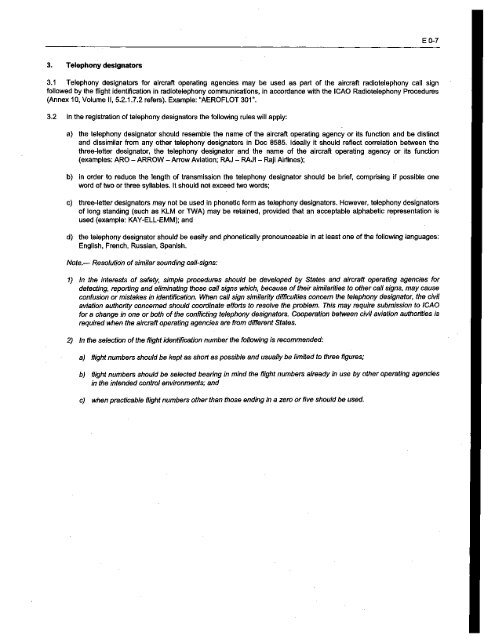
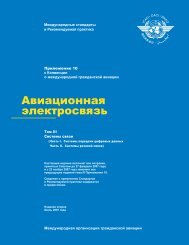
![ÐÑкÑÑÑÑ Ð´Ð¾ÐºÑÐ¼ÐµÐ½Ñ [1822,71 Ðб] - AEROHELP.ru](https://img.yumpu.com/47675783/1/190x245/nnnnn-3-4-n-1-4-u-1-2-n-182271-aerohelpru.jpg?quality=85)

![ÐÑкÑÑÑÑ Ð´Ð¾ÐºÑÐ¼ÐµÐ½Ñ [1935,63 Ðб] - AEROHELP.ru](https://img.yumpu.com/41712209/1/190x245/nnnnn-3-4-n-1-4-u-1-2-n-193563-aerohelpru.jpg?quality=85)
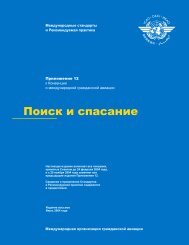
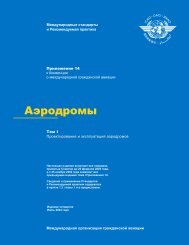
![ÐÑкÑÑÑÑ Ð´Ð¾ÐºÑÐ¼ÐµÐ½Ñ [1669,12 Ðб] - AEROHELP.ru](https://img.yumpu.com/36083111/1/190x245/nnnnn-3-4-n-1-4-u-1-2-n-166912-aerohelpru.jpg?quality=85)
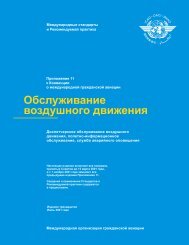
![ÐÑкÑÑÑÑ Ð´Ð¾ÐºÑÐ¼ÐµÐ½Ñ [1351,46 Ðб] - AEROHELP.ru](https://img.yumpu.com/36064904/1/190x245/nnnnn-3-4-n-1-4-u-1-2-n-135146-aerohelpru.jpg?quality=85)
![ÐÑкÑÑÑÑ Ð´Ð¾ÐºÑÐ¼ÐµÐ½Ñ [1192,3 Ðб] - AEROHELP.ru](https://img.yumpu.com/36064765/1/190x245/nnnnn-3-4-n-1-4-u-1-2-n-11923-aerohelpru.jpg?quality=85)